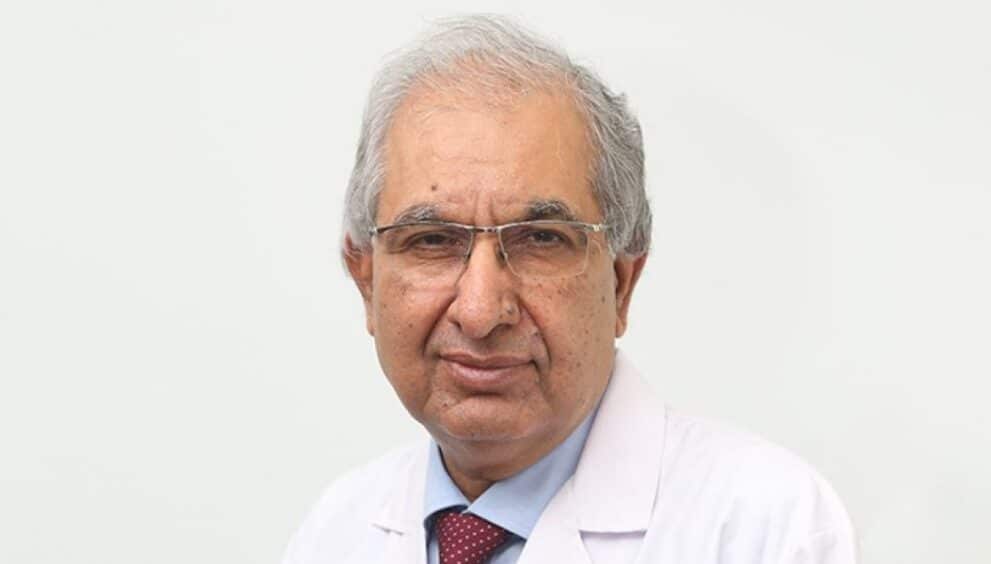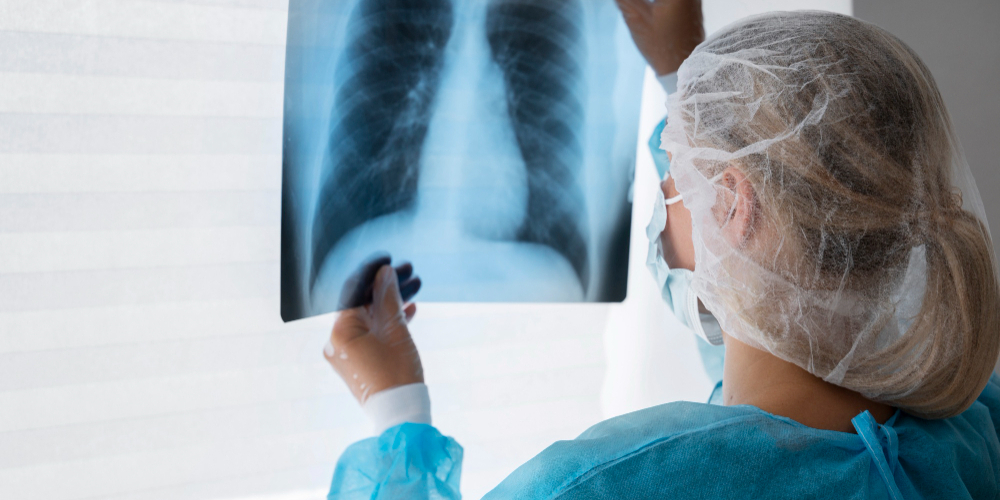World Asthma Day: Dr GC Khilnani on tackling India’s asthma crisis with awareness and innovation
Every first Tuesday of May is celebrated as World Asthma Day, and this year, we spoke to well-known pulmonologist Dr GC Khilnani about the condition and the misinformation swirling around it, that create hurdles in its management
Author
Author
- admin / 7 months

- 0
- 8 min read

Author
India is home to close to 3.5 crore people with asthma, a chronic respiratory condition affecting over 25 crore people worldwide. This means that 1 in every 50 people in the country has Asthma. In its national capital, Delhi, the rates are even more alarming, with up to 29.4% of children affected, driven largely by air pollution, as noted in a 2022 Lung Care Foundation study.
Asthma is characterized by airway inflammation and constriction, which causes symptoms such as wheezing, shortness of breath, chest tightness, and coughing, and is frequently induced by environmental factors such as pollution, dust, pollen, tobacco smoke, or viral infections. While asthma is incurable, it can be effectively managed with inhaled corticosteroids and bronchodilators, trigger avoidance, and lifestyle changes, allowing most people to live normal, active lives when under control.
However, misinformation about the condition and prevalent misconceptions such as inhalers used to manage asthma can have severe side effects and can be habit-forming, has caused hesitancy in people following asthma management protocols. This World Asthma Day, First Check spoke to Dr GC Khilnani, Chairman of the PSRI Institute of Pulmonary, Critical Care & Sleep Medicine and former Head of Pulmonary Medicine at AIIMS, New Delhi, to discuss the burden of asthma in India, effective management strategies, the misinformation surrounding these and emerging advancements in care.
Here are the edited excerpts of the conversation:
What drives the prevalence of asthma in India, which age group is most vulnerable, and how does this compare globally?
Dr Khilnani: Asthma is a global disease. It’s a disease that is transmitted by genes, but whenever there are adverse circumstances in the form of triggers, then plasma surfaces. So the triggers could be dust, pollution, or tobacco smoke. It could also be pollen, a change in temperature; anything and everything under the sun can cause an allergic reaction. Usually, the children are affected much more, and fifty percent of the children get rid of it without having intervention also. Air pollution is a big trigger for asthma. In Delhi, for instance, a third of children have asthma due to high pollution levels, which is much higher than expected globally.
So, do we know, like, in the past few decades, how has the prevalence of asthma changed? What do we know about trends?
Dr Khilnani: Asthma prevalence hasn’t significantly changed because it’s primarily a genetic disease, but it’s more recognized now. It’s not just developing countries with high asthma rates; countries like New Zealand have one of the highest incidences of asthma. In India, particularly in the Delhi-NCR region, air pollution is a major trigger, increasing prevalence, especially among children. However, there’s no scientific evidence showing a steep rise in prevalence over time, as studies haven’t consistently tracked this.
How do asthma inhalers work, and what are the available treatment options for asthma management?
Dr Khilnani: So firstly, there is diagnosis of asthma. The diagnosis is based on a history of episodic cough, breathlessness, wheezing, and nighttime attacks where a person may need to sit up. This is confirmed by a test called spirometry, where a patient blows into a machine to measure airway narrowing. After administering a bronchodilator via nebulization or inhaler, we check for reversibility—if the airway obstruction opens up, it confirms asthma.

For management, first of all, there is trigger avoidance by educating patients to identify and avoid their triggers. In the treatment part: there are two types of medication. controller medications, which reduce airway inflammation using corticosteroids in microgram doses delivered via inhalation, and reliever medications, which are bronchodilators that open the airways. Usually, it is a combination of reliever and controller therapy which is used. As far as the reliever is concerned, they can be short acting for immediate relief within 5–30 seconds or long-acting, taken once or twice daily. So, both are important for treatment of asthma, and then there are some other type of medication also. And the the science is advancing. In rare cases, biologics are used for severe asthma.
Can overuse of asthma inhalers lead to any harm?
Dr Khilnani: So, there’s a myth that inhalers are habit-forming, which scares some of the patients. Inhalers have corticosteroids in micrograms, but if they are used injudiciously in young infants and children, they can cause growth retardation. However, uncontrolled asthma itself leads to growth issues, like reduced height. Now if you compare it to uncontrolled asthma and inhaled steroids, the children who have uncontrolled asthma, they also have growth retardation in the form of lesser height. But when the asthma is well controlled even while they are on steroids, ultimately, they attain their normal expected height. It’s critical to use inhalers under a physician’s supervision, with the right dose and duration.
Okay. And how do you choose the right inhaler or combination for a patient? And what role does personalization play here?
Dr Khilnani: That’s the tricky part for the physician. There are different kinds of steroids, each with different durations of action. What really matters is how the drug is taken. For example, when you use a nebulizer, the amount of medicine that actually goes into the system is five to ten times more than what you’d get with an inhaler—like a Rotahaler or dry powder inhaler.
It’s also important that right after inhaling, the patient gargles. That way, any leftover medicine in the mouth—which doesn’t help with asthma anyway—is washed out. Most of the inhaled steroids we use don’t get absorbed much into the body. They work more like a skin cream for eczema or eye drops for conjunctivitis—local treatment.
They’re not really meant to go into the whole system, though yes, a small amount might still be absorbed. That’s why it’s so important to use them carefully and choose the right drug and device for each patient.
Is there stigma or fear around inhaler use in India, particularly in rural areas?
Dr Khilnani: Yes, the stigma isn’t just in rural areas—even in cities, people still sometimes hesitate. They’ll say things like, “Oh, will I get addicted?” or “Will there be any problems if I start using this?” But now, that kind of fear is going away. People are more open—they even take out their inhalers and use them in public without any hesitation.
That said, it’s very important to take inhalers under a doctor’s supervision so they’re not misused or overused. And it’s not like once you start, you’re stuck with it for life. Inhalers can be stopped too—it depends on how the patient responds.
You mentioned Delhi, but what’s the situation with asthma across India?
Dr Khilnani: So, the incidence of asthma in India, based on studies, is around 3 to 7%. Now, whether that’s gone up or down—we don’t really know. There’s no solid scientific evidence to say it’s increased. No proper study has been done to confirm that.
What emerging treatments or technologies could improve asthma care in India?
Dr Khilnani: So, asthma care can definitely get better if we focus on health education—not just for doctors, but also for healthcare workers and patients. People need to understand that asthma isn’t really a disease; it’s more of a tendency. And if it’s diagnosed and managed properly, a person can reach great heights—whether it’s in their career or even in sports.
Like, take David Beckham—he was a top footballer, and he had asthma. In fact, in the 1988 Olympics, about 5 to 10% of the medal winners were asthmatics. So it’s very much possible to live a full, successful life with asthma, as long as it’s under control.
Sometimes, even we as doctors hesitate to tell patients they have asthma because there’s still a bit of stigma. But it’s important they know so they can manage it well and live normally.
Now, in terms of technology—yes, there’s been a lot of progress. Earlier, inhalers had to be taken four times a day, but now we have ones you can use just once or twice daily. And for people with severe or hard-to-control asthma, we now have biologic medicines. They’re expensive, yes, but they’ve been a big step forward. And newer ones are coming up all the time to help improve control even more.
Also read: Fact-check: ‘Natural’ remedies can’t cure asthma – First Check










